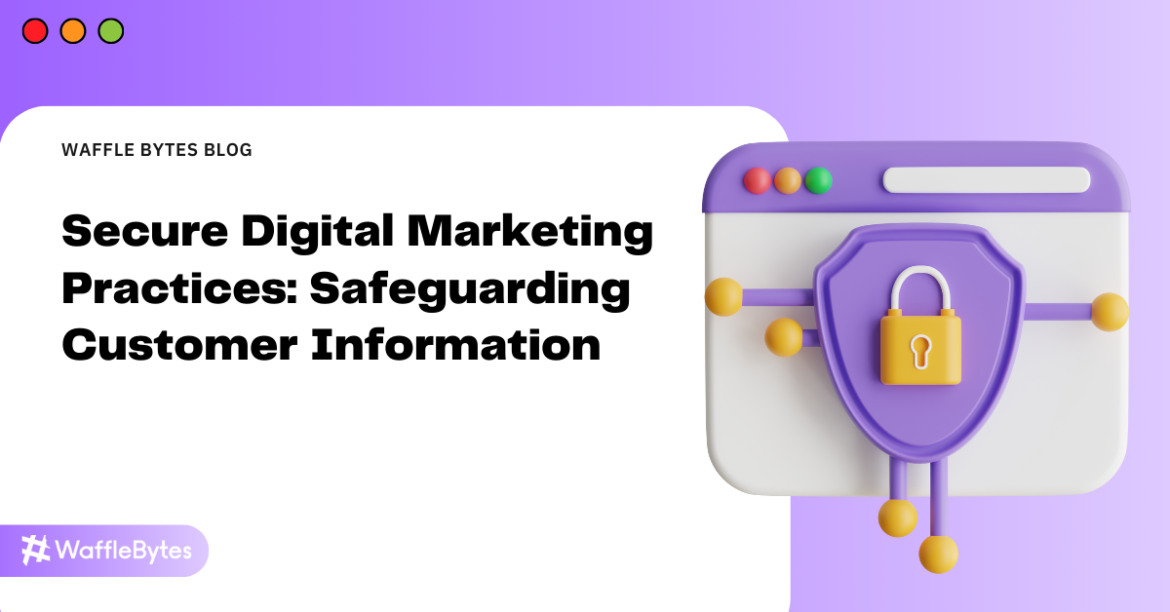The worldwide market for security is witnessing a notable surge. Forecasts estimate its value will climb to an extraordinary $225.21 billion by the year 2030. This reflects an annual growth rate of 8.0% starting from 2023 until 2030.
All digital activities involve potential dangers, which are especially noticeable when working with valuable data. Marketers actively use customer data to optimize advertising, personalization and other tasks. But how to safeguard customer information if you cannot do without such data? Here are the tips for protecting customer data in digital marketing that work best today.
Digital Marketing Cyber-Security Tips
#1 Find Out the Laws on Working with Customer Data
Within the United States, a range of privacy regulations governs the handling of digital assets. These regulations primarily originate from the federal level since digital communications transcend state boundaries. For small businesses operating in sectors with stringent regulations such as healthcare, finance, and legal services—often referred to as ‘Your Money or Your Life’ (YMYL) industries—data privacy requirements are particularly rigorous.
The healthcare sector adheres to the Health Insurance Portability and Accountability Act (HIPAA), which sets the standard for patient data security.
In the realm of finance, consumer privacy and data protection fall under the purview of the Gramm-Leach-Bliley Act (GLBA), enacted in 1999.
Violations of these stringent regulations can lead to substantial fines, legal penalties, and even criminal charges against the business.
#2 Use a VPN
VPNs have different areas of application, but security and privacy are the main ones. If you download VPN for PC, you get data encryption regardless of the type of site and its settings. For the professional sphere, choose the fastest VPN for Windows so that it does not affect your productivity. In our office it is customary to use VeePN. It protects against phishing attacks, any attacks on valuable information, prevents targeted hacker attacks, etc.
#3 Limit Data Collection
Contrary to common belief among many in digital marketing, hoarding excessive customer information may inadvertently increase business vulnerability and the potential severity of data breaches. Storing and securing an overabundance of data can be unwieldy, with the added risk that the excess information may hold little to no value for the company. In the unfortunate circumstance of a data leak, this extraneous information can result in substantial financial loss and inflict lasting damage on a brand’s trustworthiness from the customer’s standpoint.
#4 Set up Access Privileges
It would be wise to understand that not everyone in the company needs unrestricted access to all sets of data. In fact, limiting access is a positive step towards increasing security. The fewer individuals who have access to specific data, the less opportunity there is for potential security breaches.
Implement a structured access hierarchy based on variables such as an employee’s rank (for instance, comparing the access rights of junior staff members to those at the senior level) or their departmental role (like differentiating access between sales personnel and marketing teams).
#5 Set Up Web Content Filtering
Implementing web content filtering stands as a robust strategy for safeguarding client data. Employers wield this measure to regulate the availability of certain internet content to their employees, encompassing both websites and email communications.
The primary objective is to preemptively intercept access to sites that are either considered unsafe or not suitable for the workplace, effectively diminishing potential cyber security threats. This measure can be complemented by a good VPN in Microsoft Edge, which also protects against a number of cyber threats in the background. This can be executed through multiple tactics, such as denying access to particular URLs, restricting entire classifications of websites, or efficient keyword filtering to prevent exposure to harmful content.
#6 Set Smart Passwords
Gone are the days when ‘password123‘ could be considered a secure choice for protecting your sensitive information (if it was ever deemed secure at all). It’s essential now, more than ever, to devise robust passwords that combine letters and numbers, special characters, and a mix of uppercase and lowercase. Opting for encryption can provide you with an even higher level of security.
A savvy move for anyone serious about their digital security is to leverage a password manager, such as the highly regarded LastPass depicted in the picture. Password managers utilize robust encryption methods to store your passwords, ensuring they remain indecipherable, even in the unfortunate event of a cyber attack.
#7 Keep Communication Open
In the event of a data incident, it’s crucial to prioritize transparent communication with both your team and customers. Keeping stakeholders informed ensures trust is maintained. Keep the updates focused and frequent to provide necessary reassurance and clarity.
Effective data protection is a two-way street. Establish a system that encourages your team to proactively flag any abnormal activities, which is equally as vital as the updates from your IT department or executives.
In Conclusion
All members of your team are vital to safeguarding client information. Forge trust among consumers and staff by creating a data protection strategy now. Ultimately, appreciation will come from both sides, and you’ll be thankful for taking action.

